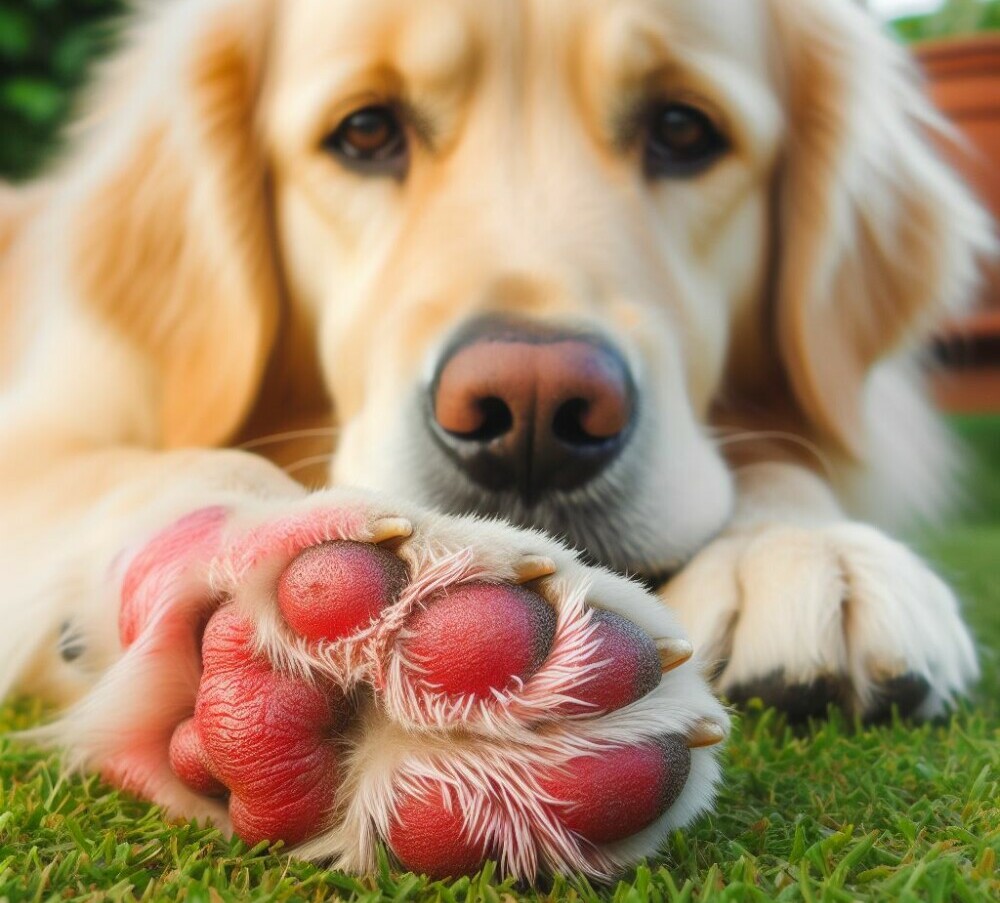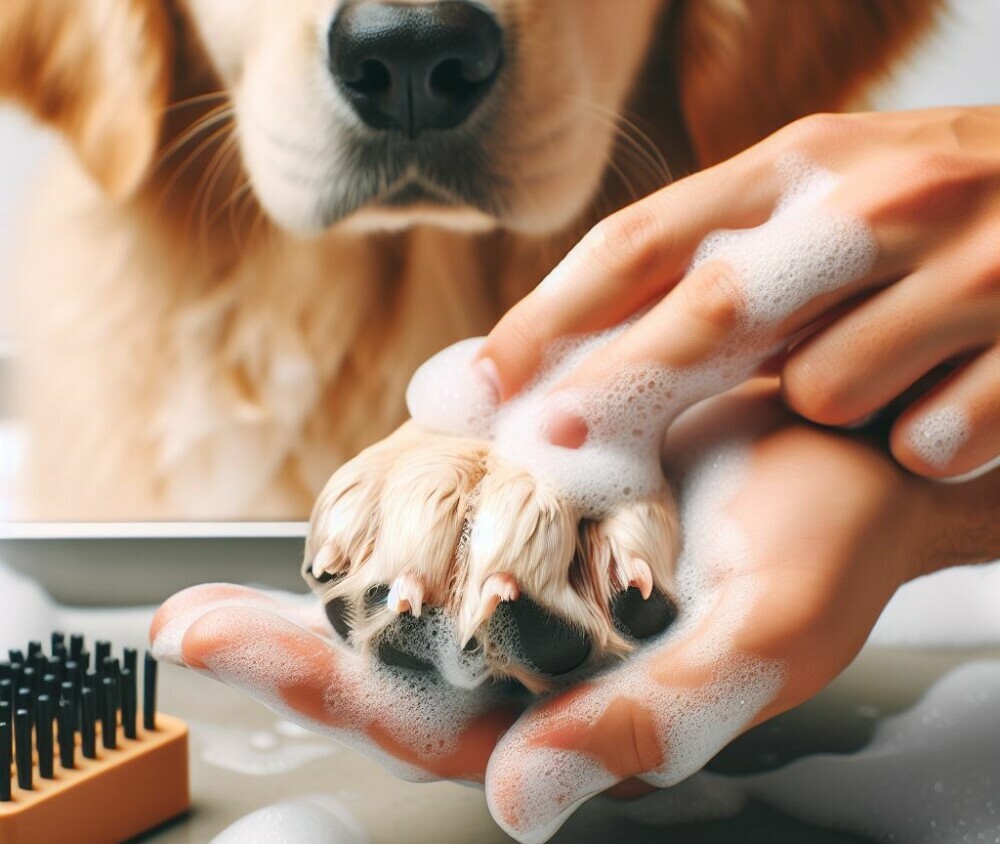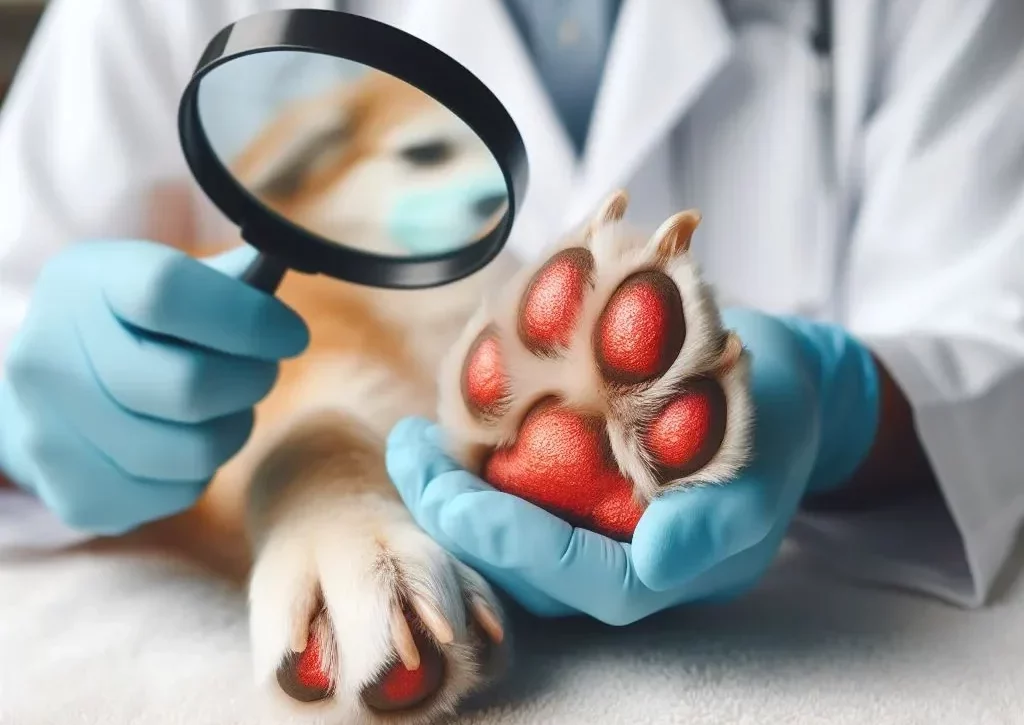Ever wondered why your senior dog might be licking their paws excessively or why they’re so red and inflamed? Well, chances are, they could be dealing with pododermatitis. This is a fancy term for inflammation of the paw, and it can really make life tough for our four-legged friends, especially as they age.
Let me paint a picture for you using my own buddy Rio, a 12-year-old Labrador, as an example. About three years ago, Rio was diagnosed with pododermatitis. Trust me, it’s been quite a journey since. The truth is, it’s not something that you can simply cure; it’s about managing the better days and the not-so-good ones.
What makes pododermatitis such a pain, figuratively and literally, are the various factors that contribute to it. In Rio’s case, it turned out to be allergies. For senior dogs, this condition is particularly concerning because they’re often less active and their immune systems aren’t what they used to be, which means recovery can be slower.
Getting a grip on Rio’s condition meant understanding it fully. It’s an issue that affects the paws, causing symptoms like swelling, redness, discharge, and even lesions. There’s not just one cause; it could be anything from infections to immune-mediated diseases, but allergies are a significant trigger we’ve noticed.
So, as we roll into the next section of our guide, think about what you’re feeding your own furry senior. Could it be contributing to pododermatitis? I’ll give you the lowdown on how a dietary switch to hypoallergenic food turned out to be a game-changer for Rio and might just be for your dog too.

Dietary Adjustments for Allergy-Induced Pododermatitis
If you’re grappling with your senior dog’s pododermatitis, I’m going to let you in on a game-changer: the diet. It’s not just about filling their bowl; it’s also about what goes into that food that could be triggering their allergies. In my experience with Rio, the switch to a hypoallergenic diet was a turning point. Here’s how we navigated this shift to help alleviate his paw troubles.
Now, what’s critical is understanding how diet influences pododermatitis. Allergies can cause an inflammatory reaction, which in senior dogs often manifests in their paws. If you want to get a handle on your dog’s allergies, the first place to start is with their food. That’s right, certain ingredients are infamous for igniting allergy flare-ups, so opting for a hypoallergenic diet might just do the trick.
The search for the right food can be overwhelming, but remember, it’s about finding something that meshes well with your dog’s needs and preferences.
In my opinion, you’ve got to keep a close eye on how your senior dog responds after you’ve made dietary changes. Adjust accordingly, and don’t worry too much if it takes a bit of trial and error. It took some time, but eventually Rio’s paws showed signs of improvement, which was a massive relief.
You’re going to find out that maintaining paw health doesn’t stop at the food bowl. Next up, I’m here to help you with paw care and how it plays a vital role in managing your dog’s pododermatitis, especially when it comes to tackling those painful flare-ups.

Paw Care and Pain Management Practices
If you’re dealing with a dog like Rio who has pododermatitis, you know paw care is non-negotiable. It’s not just a matter of cleanliness; it’s a whole regime to keep those paws healthy and your dog comfortable. Regular cleaning is a cornerstone of this, because dirt and allergens can aggravate the paws, leading to those painful flare-ups we all want to avoid.
Now, when the condition kicks in full gear and Rio’s paws get particularly sore, that’s where dog shoes come into play. I was a bit skeptical at first, but they’ve been a game changer. It’s like having a protective shield that lets Rio walk more, which is great for his overall health and spirits. If you’re in the market for dog shoes, make sure they fit well and are made of breathable material (and hey, I’ve got some recommendations that you can check out HERE).
In terms of routine care, consistency is key. I make a point of washing Rio’s paws after each walk. Think about it like brushing your teeth – you wouldn’t skip that, right? Neither should your dog skip a paw wash, especially when dealing with pododermatitis. Once clean, make sure to thoroughly dry those paws to prevent moisture buildup, which can worsen the condition.
As for topical treatments, after trying a few, I’ve stuck with CBD-based creams. I know, CBD might sound trendy, but here’s the deal: it really helps to soothe Rio’s inflamed skin. The trick is to find one that absorbs well and doesn’t leave a greasy residue. Your vet can definitely point out some reputable options, but I’ve also got a few I lean towards that you can see HERE.
Recognizing pain is critical, as our furry friends can’t just tell us they’re hurting. If you notice your dog licking their paws excessively, limping, or showing reluctance to walk, it’s probably time for some extra tender paw care or a check-up with your vet. Managing pododermatitis in senior dogs is about being proactive – if you spot the early signs of discomfort, you can prevent a lot of pain down the road.

Evolving Management Strategies and Recommended Products
I’m going to be honest with you: managing pododermatitis in senior dogs like my Rio requires patience and adaptation. After three years of ups and downs, I’ve learned that what works today may not work tomorrow. And that’s okay. It’s all about knowing your dog and being ready to adjust your strategies as needed.
If you want to tackle pododermatitis head-on, I’ve found some products that really make a difference. From the hypoallergenic food that keeps Rio’s allergies at bay to the creams and balms that soothe his painful paws, there are solutions out there that can help. Dog shoes have been a game-changer for us, allowing Rio to walk more comfortably, even on rough terrain.
Remember, after you give your dog a bath or they come in from the rain, make sure their paws stay dry. Dampness can exacerbate pododermatitis, so it’s a simple but effective practice that can prevent unnecessary discomfort.
Your first attempt at managing this condition doesn’t need to be perfect. It’s a learning curve, and you can always adjust your approach down the road. Just know that you’re not alone on this journey. There’s a community of dog owners out there dealing with the same challenges, and we’re all here to support each other.
I’d love to hear your feedback and the measures you’ve taken to manage pododermatitis. Share your story in the comments below. Let’s exchange tips and encouragement because, at the end of the day, we all want our furry friends to live their golden years in comfort.
Warmest Wags,
Morena
Founder, GoldenYearsPaws.com
Follow Rio’s adventures on Instagram!

